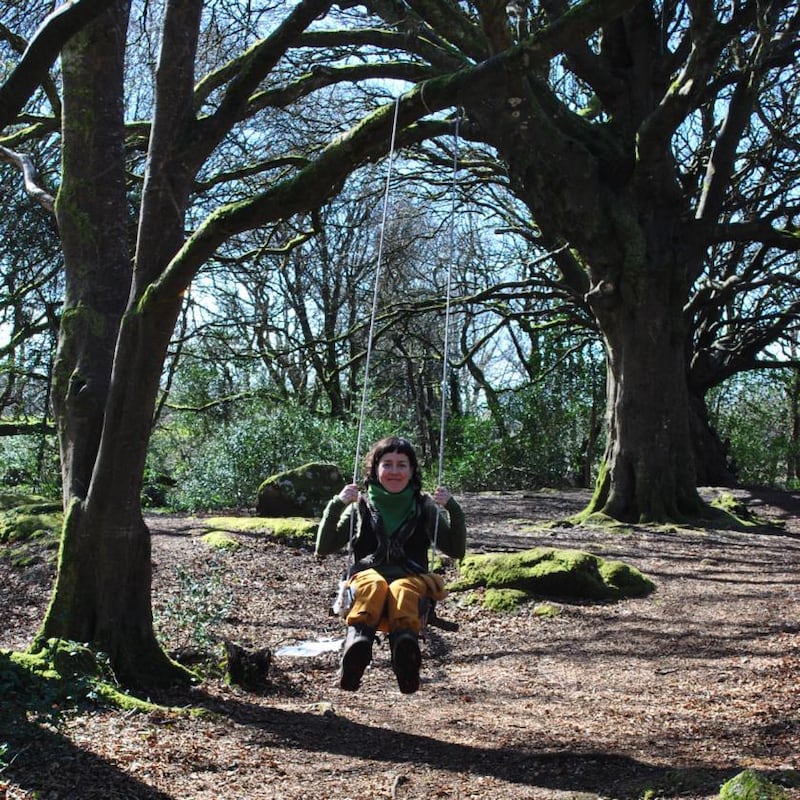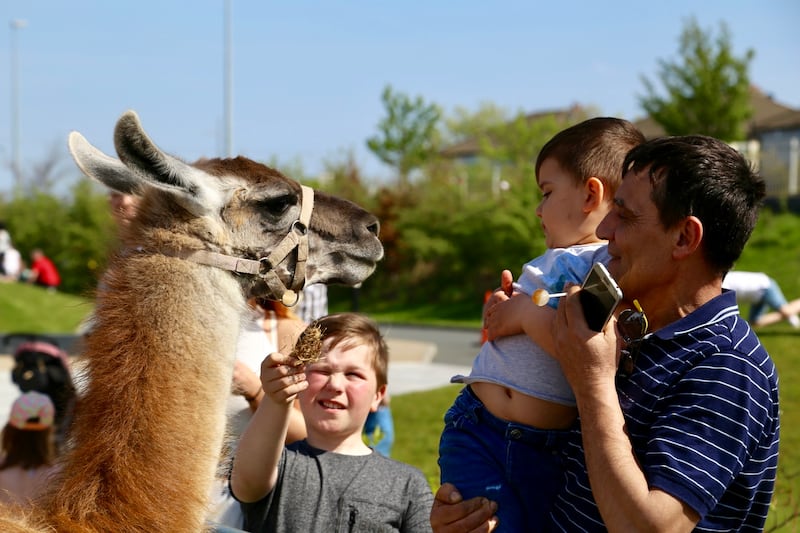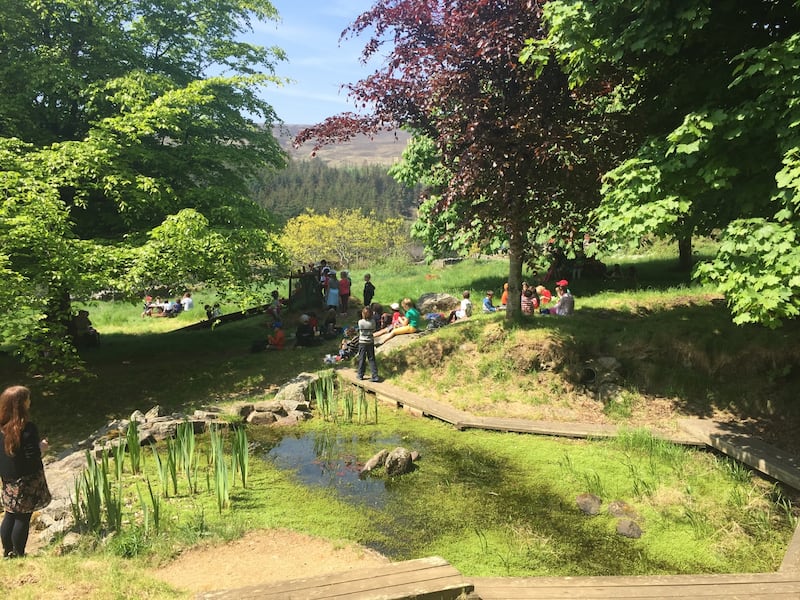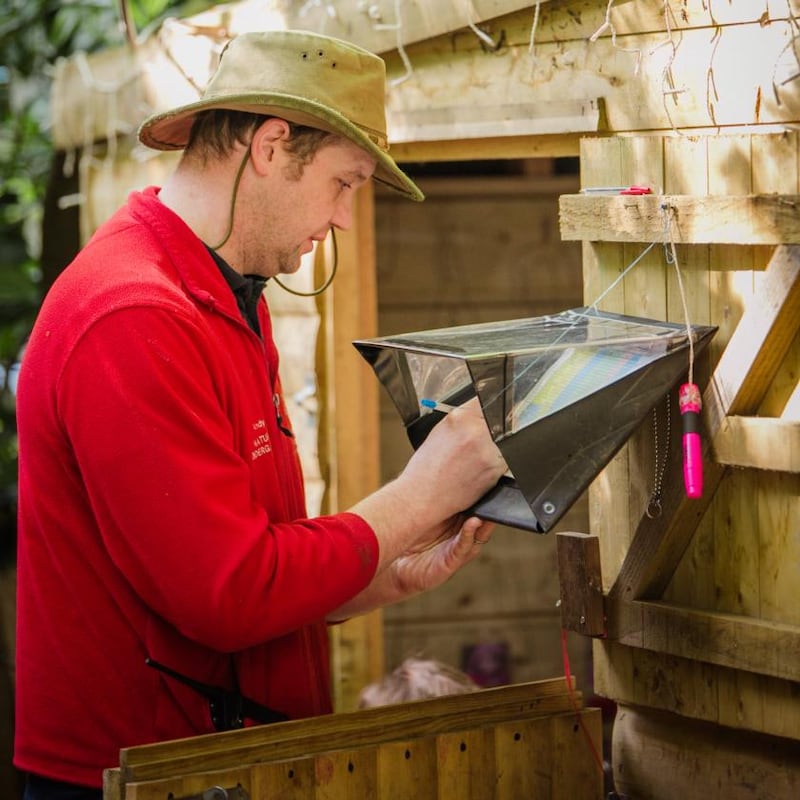Ask anyone of a certain age about how they spent their formative years, and there’s a very good chance that sun-dappled parks, forests and a lot of fresh air were involved. Yet the simple joys of the great outdoors don’t feature quite as heavily in modern day childhoods, having been ousted by smartphones, tablets and heavy after-school schedules.
We already know that the benefits of getting closer to nature – emotional, physical and psychological – are manifold. And a number of Irish organisations and initiatives are bringing the outdoors back into the affections of Irish families.
From reacquainting kids with farm animals and combing the coastline for natural treasures to highlighting the importance of conservation and mucking about with mud, there are easy and cost-effective ways to get little ones back to nature. We asked a range of nature experts around Ireland to share their tips and suggestions.
‘When you get kids out there, it’s incredible the changes you can see’
Angie Kinsella of Nature Way Education runs regular forest schools and is involved in the Heritage in Schools programme run by the Heritage Council
"I was running a forest school this week and I came across a 13-year-old who was just absorbing the surroundings in the forest. He said, 'I'm nervous about the summer as I don't want to be stuck indoors the whole time. My mum doesn't think it's safe for me to go further than the local village.' When you get kids out there, it's incredible the changes you can see. It's like a reset of the nervous system; even fiery kids don't need so much to be the centre of attention, as they let nature take that role.

“There are so many places to go in Ireland; we’re never far from nature. I’ve brought schoolkids to parks near their homes that they never even knew were there. Kids don’t want to sit in a manicured garden where they can’t walk on the grass; in the outdoors, their natural instincts to play will kick in.
“The big thing I hear from parents is that the Irish weather is so crap, but don’t be afraid to let kids get mucky. It’s only an item of clothing. Besides, the memories they make are huge. Listening out for birdsong is an easy way to get started with instilling a love of nature in children, or go looking for a squirrel’s nest. In a park or forest, make a ‘mini animal mansion’ – a little shelter with twigs or leaves, where mini creatures can hang out.”
‘The kids are totally fascinated with the animals’
Ian Callanan is one of the owners of Wooly Wards Farm, a mobile petting and activity farm based in Co Tipperary
"We offer hands-on experience with small animals like rabbits, chickens, ducks, piglets, lambs and goats. People at the events can handle the animals, hold them and find out a little about them. The idea is to try to get people to reconnect with nature, especially young people.
“These days it’s all PlayStations and Xboxes and no notion of where everything comes from. In my previous job I used to manage an environmental organisation in Dublin, and we’d go to schools and ask kids, ‘Where does a tomato come from?’ They’d often say, ‘Tesco’.

“The kids are totally fascinated with the animals – you do get some kids who are terrified. In big groups, you find the kids don’t want to go near an animal but by the time you’ve gone through the animals they do want to pet one. It’s about breaking down those fears that they’ve probably inherited from grown-ups. The big thing kids learn about being around these animals is the concept of being caring and nurturing.
“When I was growing up in Cork we were outside the whole time and always making some game or another up. There’s so much that kids can be doing, and parents really need to take responsibility around this. Parents wrap children in bubble-wrap, but kids will fall, get bitten, get stung by bees or feel an electric shock – these are all the things we were experiencing, and that’s okay.”
‘Go searching for something as simple as a spiky leaf or a ladybird’
Niamh Potter is education co-ordinator at Airfield Estate, in Dundrum in Dublin, which regularly runs nature workshops for children and adults
"Most of our workshops and camps are based in the outdoors – we have ones that focus on science, explorer ones, foresting camps, farm-to-fork camps and young farmers events. Surprisingly, we don't see too many of the kids coming in with their phones and tablets; they're just outside and they love it. They're so keen to be out there, whether it's climbing trees or just getting their hands dirty. The activities seem to have huge benefits in terms of kids' confidence and independence, as well as fostering a respect for the environment.
“We’d see our role as educating young people about where food comes from, so that they can make better food choices. One of the principles of our forest schools is ‘manageable risks’ – little risks and working out that things aren’t always easy are of huge benefit to children in terms of development and creativity. When we do shelter building, for example, we chuck water on it to find out if it’s waterproof.
“For families, a good place to start to reignite a love of nature is with something like plant identification, or a bug hunt. Find a sheet online listing the different insects you can find in a typical Irish woodland, and try to find them and tick them off the list. Likewise, there are several online resources about Irish trees. Do a mini-treasure hunt, or even go searching for something as simple as a spiky leaf or a ladybird. You don’t even need any equipment to get going.”
Airfield's Woolapalooza farm festival is on this Sunday and bank-holiday Monday, May 5th and 6th. Its farm-themed activities for all ages will include sheep-shearing demonstrations, sheepdog trials, cooking and baking demonstrations, drop-in craft sessions, and biodiversity and foraging walks
‘If you can teach them to look, all else will follow’
Tony Lowes is a director at Friends of the Irish Environment, a collective of environmental activists
"If you can get kids to the beach or the bog, the experience gives them something special that opens the windows in their minds. They pick up seashells, clamber in wildness, pick up sticks or run through the woods to play.
"Getting involved in a project like Seed Savers, which is dedicated to preserving native fruits and vegetables, or Green Schools, run by An Taisce, is a really good way to get kids excited about nature.
“The important thing is to get kids outside. Get them to actually look at things. Don’t let their eye skim over a forest or a field. Encourage them to learn to focus on the different shapes of the leaves, and the way it’s a matrix. If you can teach them to look, all else will follow.”
‘The questions the kids were asking were enough to challenge the experts’
Aidan O'Hanlon is the entomology curator at the National Museum of Ireland – Natural History
"One thing that parents can do is to get involved in their local conservation group, or go to events run by the Irish Wildlife Trust. Kids are naturally fascinated by nature; at one of the Bull Island Conservation Volunteer meetings, there was a workshop on cockles and muscles and there were loads of kids there. It was fairly scientific, but the questions the kids were asking were enough to challenge the experts. Often, it's the adults who are squeamish about insects – they've learned to be afraid, while kids are just naturally inquisitive.
“To get started, though, it doesn’t have to be as formal as attending a branch meeting; just go to the local park and let the kids run around for a bit. Tip over a few logs or look at some tree bark. Once you’re there 10 minutes, you’ll see how much biodiversity is really out there. It’s the little spark that gets the next generation of biologists passionate about what they do.”
‘They never look at their phones. They leave filthy dirty and very tired’
Katie Long is owner and manager of Pine Forest Art Centre, in Co Wicklow, which offers creative and educational arts and crafts courses for children
"On our courses and family days, we encourage everyone to become a part of nature. We collect stuff outside to use in art activities; we point out animals and we teach kids about the lifecycle of tadpoles and newts in our pond. They're learning without even noticing it, and they're moving around in the fresh air. They never look at their phones; they leave calmer, more centred, filthy dirty and very tired.

“It’s very simple – parents can just leave their phones at home and go for a walk. There’s the seaside, and we have so many parks; you’ll find great mini-walks everywhere. Parents could do fun treasure hunts or a teddy bear’s picnic for birthdays. Once you start getting the whole family working together to arrange a picnic, for example, it becomes a really fun activity.”
‘We collect plant specimens to create unique artworks’
Brian Cregan is a Dublin-based artist photographer, who facilitates nature and photography workshops with children and young people
"Some of my earliest childhood memories are of being in our garden in Newbridge playing on the lawn, looking at the flowerbeds and helping in the vegetable patch. I remember my mother giving me the stalk of a tiny pink flowered plant to chew, and walking through the garden with a stick of freshly picked and washed rhubarb dipped in sugar.
“These joyful experiences help inform the workshops and projects that I run with children. Before we even go outside I like to talk about nature in our everyday lives, from the food we eat to the clothes we wear. We don’t have to travel far to experience it. In photogram workshops we collect plant specimens from green spaces and combine them with text and drawings to create unique artworks. It’s a great way for children to learn about science and the invention of photography.
“Pinhole photography offers children the chance to build their own camera from scratch to take photographs of their local environment and themselves, if they can stay still for long enough! There is a great sense of achievement in creating black and white photographs outside with a simple shoebox.”
‘Technology is a fantastic resource for parents to get inspiration’
Andy Noble is acting director of the Nature Kindergarten, an immersive outdoor classroom, at Park Academy Childcare in Bray, Co Wicklow
"If you look at our evolution it is clear that we are naturally outdoor creatures: we are designed to be outdoors, which is why our bodies have the ability to regulate our temperature. It's also the reason we feel good after spending time outdoors. We are tapping into our basic primal connection with the natural world.
“Finding ways to integrate technology with the outdoors is the way forward. Instead of demonising it, use it as a tool to help children find out more about nature and to plan fun outdoor activities such as scavenger hunts. It’s a fantastic resource for parents to get inspiration and, if used correctly, it can enhance time spent outdoors rather than impede it.

“Parents need to take the lead in organising opportunities for outdoor play and exploration, but also to consult their children so that they feel involved. Simply asking them questions like ‘What would you like to do?’ or ‘What can we do to make outdoor time better for you?’ can lead to some great ideas and plans.
“The children at Nature Kindergarten love to forage for food, and especially enjoy cooking or preparing meals with these foods, from nettle ice pops to wild-garlic pesto. Foraging for food is a fun family activity, and books such as Foods for Free, Richard Mabey’s little Collins Gem guide, can be a great resource for first-time foragers. In late summer and early autumn, there will be lots of berries throughout the countryside, so this would be an ideal time to go on a family foraging adventure.”















